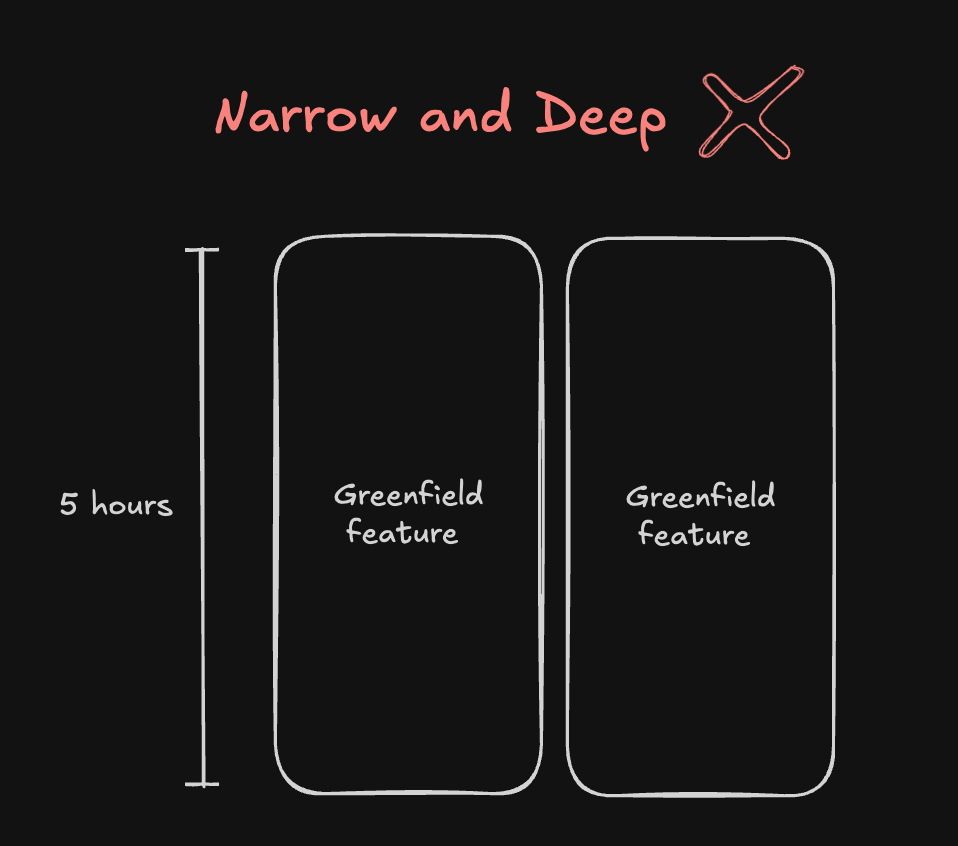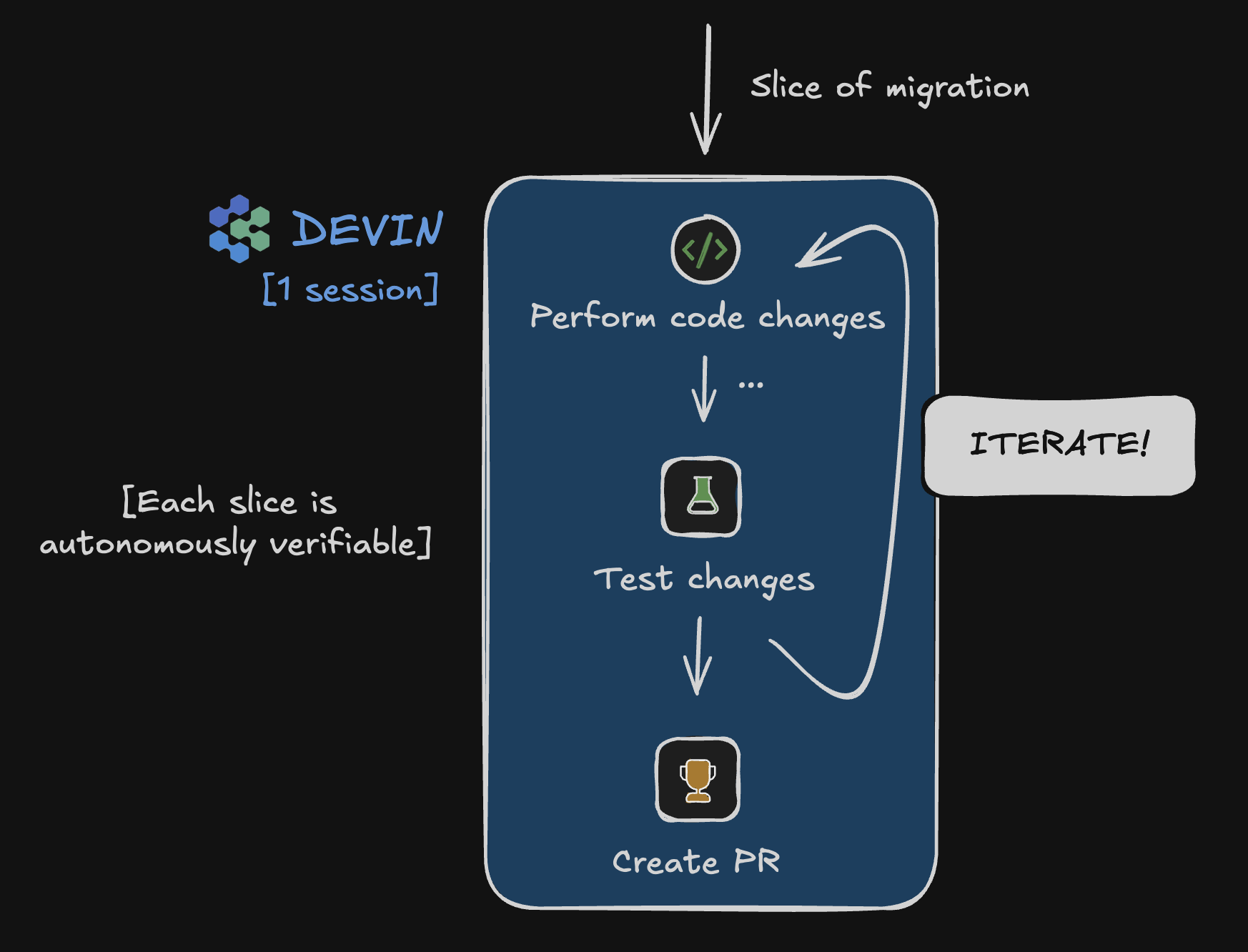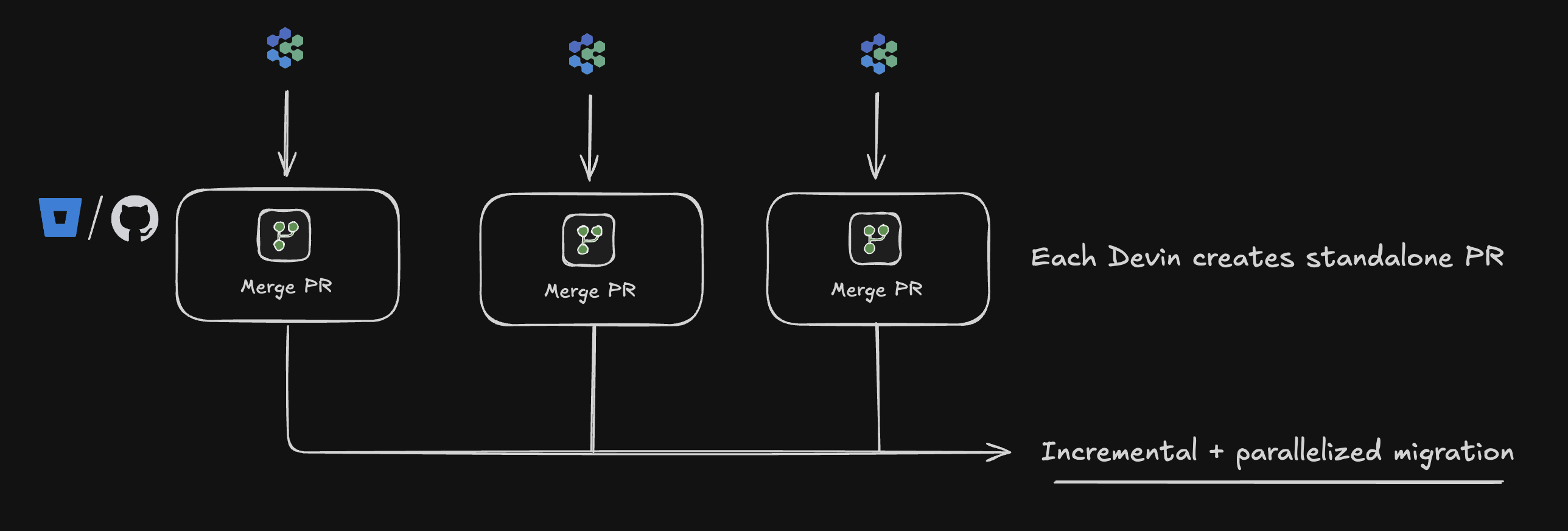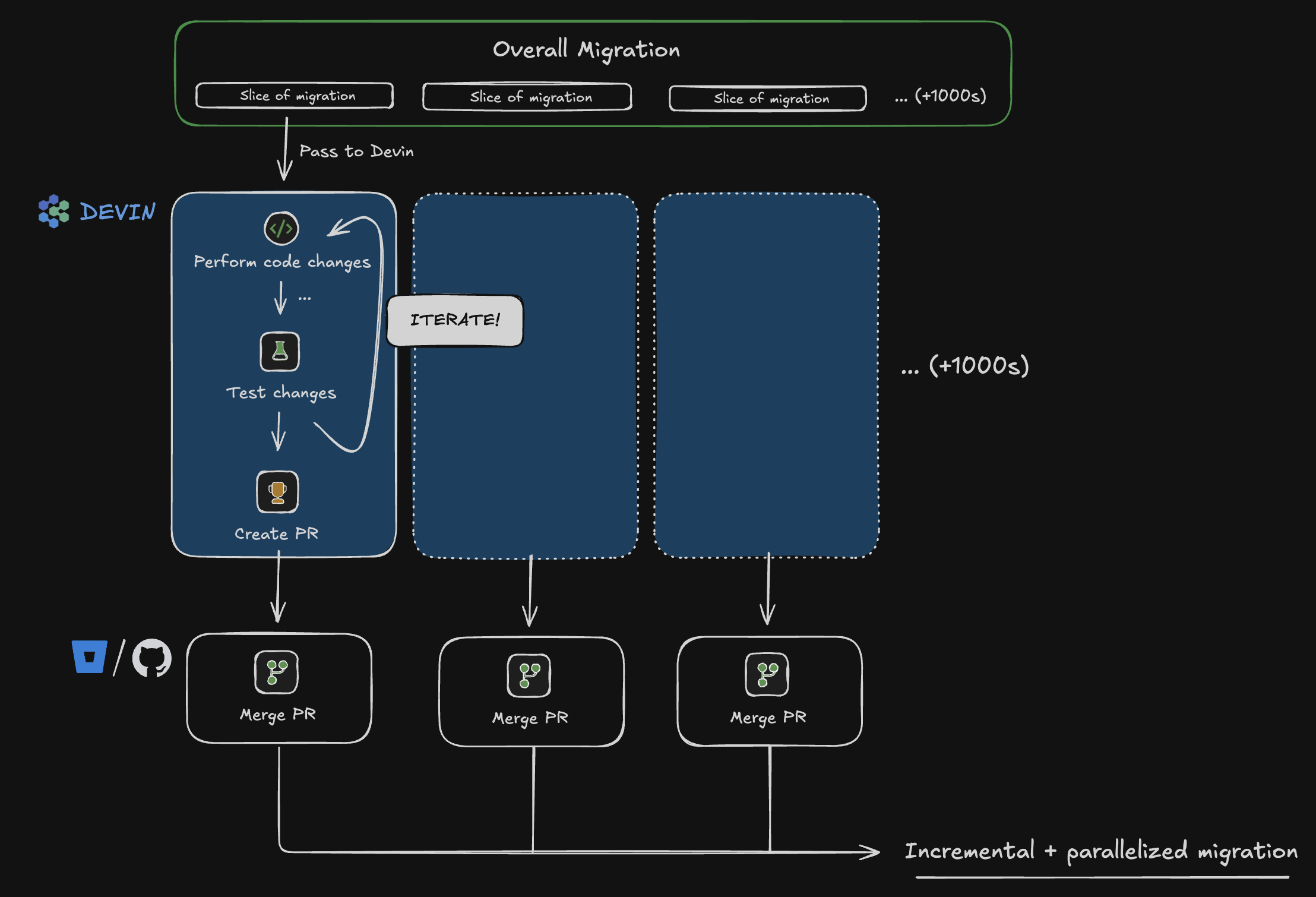TLDR — Devin Use Case Requirements:
- High volume of repetitive subtasks (slices)
- Subtasks of junior engineer-level difficulty
- Subtasks that are isolated and can be done incrementally
- Subtasks with an objective verification loop
- (Recommended): Minimal project dependencies
Necessary characteristics
An optimal strategic Devin use case is shallow and broad, as opposed to narrow and deep. Complex, net-new features (even if repetitive) are unlikely to be sufficiently reliable at scale.

The simpler the slice, the more reliable the overall project.
Slicing Use Cases [IMPORTANT]
Migrations, refactors, modernizations, and technical debt backlogs are strong use cases. For example, consider a code migration. Split the migration into isolated slices, where each task gets tackled by an individual Devin session.
Verification
A slice should be the smallest atomic unit of the project (file, notebook, or module) with:- Under 90 minutes of human engineering work
- A way to verify code changes (tests, build, CI checks, or custom verification script)

master.


To be provided by the customer
- Clear detail for every step in each slice (a detailed write-up or video of the end-to-end process is highly effective)
- Several examples of before/after code changes (input/output pairs)
- Access granted to Devin for all required dependencies in each slice
Examples
Ongoing technical debt tasks (e.g. PR review or QA testing) are also strong use cases, assuming they can be split into slices.Migrations, modernizations, and refactors are strong use cases for Devin when they are incremental. A migration that requires upgrading the entire repository to the new system at the same moment, rather than one slice at a time, is not recommended.
